Events of 26th January 2021 were planned and executed by Khalistani supporters
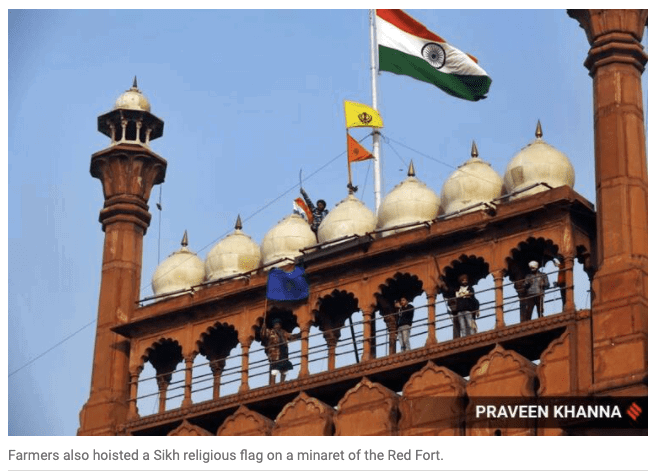

In this article, I will try to present to you some facts about the so-called ‘farmer protest’ and will try to prove that the events of 26 January were an operation by Khalistan supporters. Let’s try to see the events from a zoomed-out point of view. Firstly, in the initial phase (and even now), this ‘farmer protest’ was concentrated only in Punjab – a state bordering Pakistan – and a state with a majority Sikh population. And efforts were being made to turn this into a religious issue rather than a farmer issue.
Next, support started pouring in from known Khalistan supporters like Jazzy-B and Deep Sidhu. That Deep Sidhu’s loyalties lie with Khalistan can be easily understood from his interview with Barkha Dutt. In this interview, he called Jarnail Singh Bhindrawale a ‘fighter’ who was ‘fighting for a strong federal structure’ and refused to call Bhindrawale a terrorist. Instead, he defended him saying ‘Bhindrawale was wrongly projected as a terrorist and a whole narrative was created against him’.
Coming to Jazzy-B, his recent song ‘Putt Sardaran De’ had some controversial lyrics that suggested that Sikhs deserve Khalistan, and in subsequent interviews, he said ‘Sikhs do not get the respect they deserve in India and they must fight for Khalistan’. There is even a tweet from him on 8 Jun 2020 saying ‘You have no idea who sant ji was he is my hero and he’s hero to so many other Sikhs’. If you recall, Jazzy-B spent New Years’ Eve with these protesting ‘farmers’.
This clearly shows that anti-India and pro-Khalistan termites had infiltrated this so-called ‘farmer protest’ far back. Despite concerns being raised from a section of the media and from BJP leaders, the ‘farmer leaders’ refused to reconsider their decision to hold a tractor rally inside the national capital on a day of National importance when security agencies would be busy with the Republic Day parade. I must add here that these ‘farmer leaders’ are actually failed political leaders – they have fought elections from different political parties in the past, and couldn’t get enough votes to even save their deposits.
Also, various videos of these ‘farmer leaders’ have been circulating on social media wherein they were inciting the participating protestors to break police barricades, reach Red Fort, and cause violence if Delhi Police stops them. The legal obligations for the events of 26th January fall directly on the shoulders of these ‘farmer leaders’.
Coming to the events of 26th January, a lot of people are confused about which flags were raised and hoisted at the Red Fort by these Khalistan-supporting rioters posing as protestors. Let me present to you the Nishan Sahib – the religious flag revered by Sikhs everywhere. It is saffron-colored, triangular in shape and has the Sikh religious symbol ‘Khanda’ at the centre. This same definition of the Nishan Sahib (saffron-colored, triangular) is available on websites like Sikhiwiki, Sikhnet, and Sikhs.org (screenshots attached here).
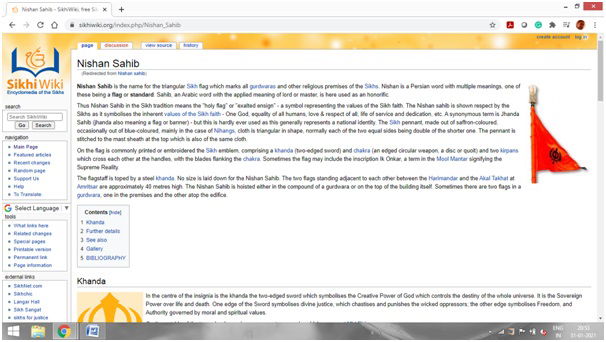

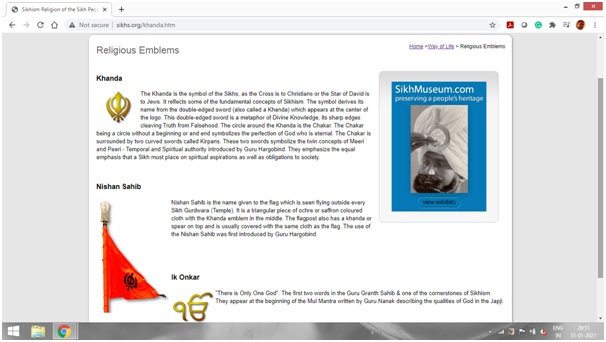
One can also google and verify that the same. Let me state clearly here that even the Sikh religious flag, the Nishan Sahib, had no place at Red Fort on 26th January. But if things had been limited to this, it might have still been tolerable. But what we witnessed was pure sedition.
Below I present to you the Khalistan flag – even though it is not clearly defined and has several variants, the most used version is a yellow, rectangular flag with the Khanda at the centre and the word Khalistan written on it in either Punjabi or English, or both. Again, this can easily be verified through a simple Google search. This flag is different from the Nishan Sahib due to its color and its shape (saffron vs yellow; triangular vs rectangular; no text vs ‘Khalistan’).
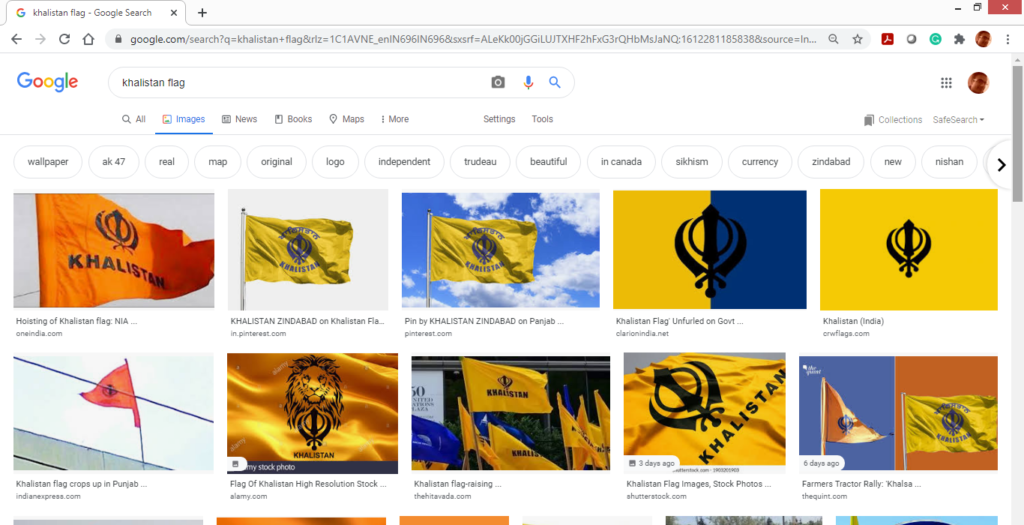
Below are a picture and a link to a video. The picture is a screenshot taken from the Indiatoday website and the link would take you to a video tweeted by ANI. One can clearly see in both of them the yellow flag with something written below the Khanda symbol. Ironically, the article from Indiatoday is a ‘fact-check’ claiming that the flag is not a Khalistan flag (tells you how fake news is being passed off as ‘fact-check’). In my opinion, if you are competent enough to put two and two together, you would come to the same conclusion that I did – this was the Khalistan flag.
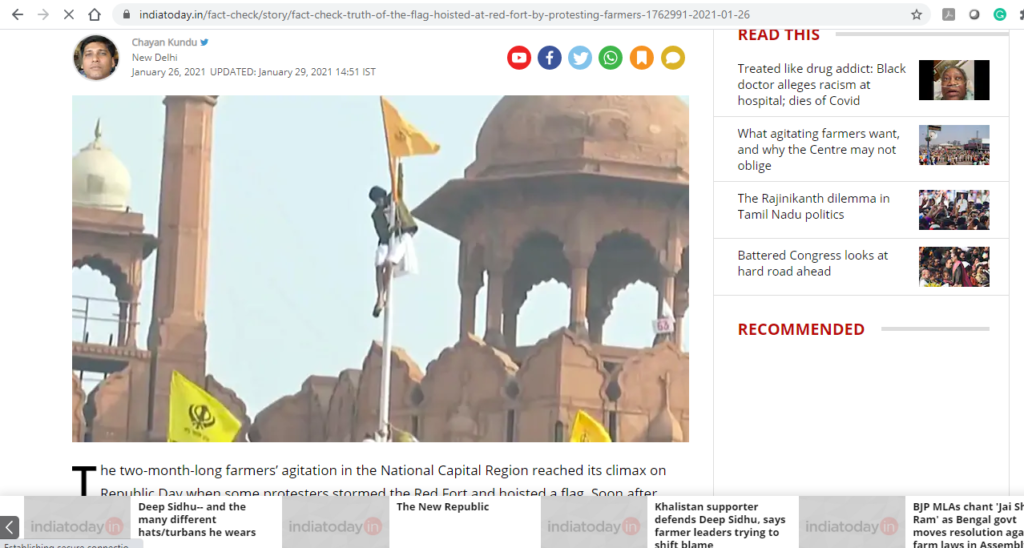
#WATCH A protestor hoists a flag from the ramparts of the Red Fort in Delhi#FarmLaws #RepublicDay pic.twitter.com/Mn6oeGLrxJ
— ANI (@ANI) January 26, 2021
Now, coming to the most important part – why? In my understanding, this is all a precursor to the 2022 Punjab state elections. Don’t forget that the elections are now a 4-way fight between Congress, AAP, SAD, and BJP. And none of the parties would leave any chance to gain electorally, even if means fanning the fire of Khalistan again – a fire that consumed a lot of lives in the 1980s. One can only hope that security agencies and the Central and state governments are keeping a tab on these events as they unfold and that they would kill this attempt to recreate the Khalistan movement in its infancy.
DISCLAIMER: The author is solely responsible for the views expressed in this article. The author carries the responsibility for citing and/or licensing of images utilized within the text.
